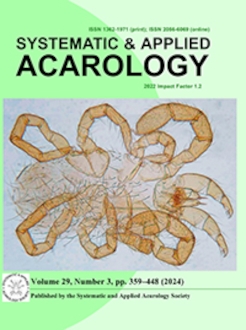Parasitengona is a diverse group of Prostigmata, including mites with life cycles that include important morphological changes between larva and deutonymph, an evolutionary novelty not shared by its closely related taxa (Halacaridae, Pezidade or Anystidae). Allotanaupodoidea is a superfamily of Parasitengona, known solely by the post-larval instars, that differs from the remaining Parasitengona mainly due to the lack of trichobothria in the prodorsal shield. Allotanaupodoidea has a single family Allotanaupodidae with six species distributed in two subfamilies, Allotanaupodinae Zhang & Fan, 2007 and Paratanaupodinae Zhang & Fan, 2007, with one and two genera, respectively. In the present study, we describe the larva of Allotanaupodus winksi Zhang & Fan, 2007 from New Zealand associated with the deutonymph by means of cytochrome oxidase I barcoding. The description reveals a remarkable resemblance between larval and post larval specimens of A. winksi, a condition approached among Parasitengona only by Calyptostomatidae.
How to translate text using browser tools
29 March 2024
The missing metamorphosis: DNA barcoding reveals that Allotanaupodoidea larvae are strikingly similar to post-larval stages
Samuel Geremias Dos Santos Costa,
Zhi-Qiang Zhang,
Almir Rogério Pepato
ACCESS THE FULL ARTICLE

Systematic and Applied Acarology
Vol. 29 • No. 3
March 2024
Vol. 29 • No. 3
March 2024
Allotanaupodus
cytochrome oxidase subunit I gene
life cycle
New Zealand fauna
Parasitengona





